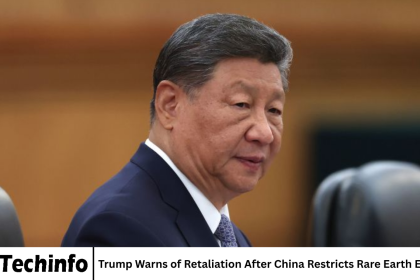The U.S. Supreme Court’s recent decision to permit the Trump administration to resume broad immigration stops in Los Angeles has sparked a heated national debate over civil liberties, federal authority, and the future of immigration enforcement in America’s second-largest city. This ruling is not merely a legal technicality—it is a decision that reshapes how federal immigration officers can operate in communities, particularly in areas with large immigrant populations. Los Angeles, home to millions of immigrants from Latin America, Asia, and beyond, has long been at the center of America’s immigration story. With this ruling, the Supreme Court has effectively opened the door for more aggressive enforcement, a move that supporters argue is necessary for national security while critics warn it undermines constitutional rights and fosters fear among vulnerable communities.
- Background of the Case
- What the Supreme Court Ruling Means
- Los Angeles at the Center of Immigration Politics
- The Legal Battle over Immigration Enforcement
- Impact on Immigrant Communities
- Supporters of the Ruling and Their Arguments
- Criticism and Opposition to the Ruling
- Political Ramifications
- Broader Implications Beyond Los Angeles
- Expert Perspectives on the Future
- Conclusion
- FAQs
- Conclusion
Background of the Case
The roots of this case lie in the Trump administration’s broader approach to immigration enforcement, which emphasized strict border controls, deportations, and expanded authority for Immigration and Customs Enforcement (ICE) agents. During Trump’s presidency, several cities, including Los Angeles, resisted federal immigration efforts by implementing “sanctuary policies” designed to limit cooperation with ICE. These policies aimed to protect undocumented residents from being targeted during routine police encounters, such as traffic stops or neighborhood patrols.
The Trump administration argued that sanctuary laws interfered with federal authority and national security, leading to lawsuits that escalated to the nation’s highest court. The Supreme Court’s decision to greenlight broad immigration stops in Los Angeles reflects a significant victory for Trump’s legal team, marking a turning point in the balance between state and local autonomy and federal power.
What the Supreme Court Ruling Means
The ruling allows immigration officers to resume a practice that had previously been restricted: stopping individuals based on immigration status without requiring strong evidence of criminal activity. This expands the scope of federal enforcement and grants ICE agents greater discretion in Los Angeles, a city that houses one of the largest undocumented populations in the country.
Critics argue that such broad authority paves the way for racial profiling and civil rights violations. Proponents, however, insist that these stops are critical tools in removing individuals who pose potential security threats. The ruling effectively prioritizes federal authority over local efforts to limit cooperation, setting a precedent that could affect cities across the United States with large immigrant populations.
Los Angeles at the Center of Immigration Politics
Los Angeles has long been a flashpoint in America’s immigration debates. The city’s diverse immigrant communities, from Mexican and Central American families to Filipino and Korean residents, make up nearly 40 percent of its population. Many of these communities have been the target of immigration enforcement in the past, leading to historical tensions with federal authorities.
Stories from residents reflect the deep unease this ruling has created. For example, Maria Hernandez, a mother of three who immigrated from Guatemala two decades ago, described the decision as “a nightmare come back to life.” Her fear is not unfounded. Studies have shown that increased immigration enforcement correlates with declines in community trust in law enforcement, as immigrants—both documented and undocumented—become less likely to report crimes or cooperate with investigations out of fear of deportation.
The Legal Battle over Immigration Enforcement
The Supreme Court’s decision is not the final chapter in the legal struggle over immigration enforcement. Legal experts note that the ruling reflects the Court’s willingness to uphold expansive interpretations of executive power in immigration matters, an area where the federal government historically holds broad authority.
Constitutional scholars warn, however, that the decision raises pressing questions about the Fourth Amendment, which protects against unreasonable searches and seizures. By permitting broad stops, the Court may have unintentionally weakened protections for individuals who are not U.S. citizens but live and work in the country legally.
Professor David Ramirez, an immigration law expert at UCLA, explained, “This decision reflects a shift in judicial thinking. The Court is signaling that immigration enforcement is a national priority, even at the expense of civil liberties. For Los Angeles, that means more encounters with federal agents and fewer protections for immigrant communities.”
Impact on Immigrant Communities
The practical impact of this ruling will be felt most directly by immigrant families in Los Angeles. Already, local community organizations report rising fear among undocumented residents. Churches, schools, and advocacy groups have begun preparing resources for families who worry about sudden detentions or deportations.
Statistics highlight the scale of the issue. According to Pew Research Center estimates, over 1 million undocumented immigrants live in Los Angeles County. For these individuals, broad immigration stops increase the risk of family separation, job loss, and community instability. Advocacy groups warn that such enforcement practices could drive immigrants further into the shadows, making it harder for them to access health care, education, or legal assistance.
Supporters of the Ruling and Their Arguments
Supporters of the Supreme Court’s decision emphasize national security and the rule of law. Conservative lawmakers and policy advocates argue that sanctuary policies undermine federal efforts to maintain immigration laws and protect citizens.
They cite examples of individuals with criminal records who were shielded from deportation under sanctuary rules, framing the Supreme Court’s ruling as a correction to what they see as local overreach. Mark Krikorian, director of the Center for Immigration Studies, stated, “This ruling reaffirms the federal government’s authority to enforce immigration laws. Without it, cities like Los Angeles essentially nullify national policy, creating pockets where lawbreakers can hide.”
Criticism and Opposition to the Ruling
On the other hand, immigrant rights groups, civil liberties organizations, and progressive politicians strongly oppose the decision. They argue that broad immigration stops are ineffective, discriminatory, and damaging to public safety. Studies consistently show that immigrants—both documented and undocumented—commit crimes at lower rates than native-born Americans, challenging the premise that aggressive enforcement enhances security.
Moreover, critics stress that the ruling could normalize racial profiling. Latino, Asian, and Black residents are disproportionately affected by such policies, leading to further mistrust between law enforcement and communities of color. The American Civil Liberties Union (ACLU) condemned the ruling, warning that it will “institutionalize fear and division in one of the most diverse cities in the world.”
Political Ramifications
The ruling also has significant political implications. For former President Trump and his allies, this decision is a symbolic win that reinforces his legacy of strict immigration policies. It also gives momentum to political candidates advocating tougher immigration enforcement ahead of future elections.
For Democrats and progressive leaders in California, the decision represents a setback in their ongoing battle to protect immigrant rights. California Governor Gavin Newsom criticized the ruling, vowing to “use every tool available to shield our immigrant communities from the harms of federal overreach.” The clash between federal and state governments could intensify, particularly if California enacts new laws designed to counterbalance the Court’s decision.
Broader Implications Beyond Los Angeles
Although the ruling directly impacts Los Angeles, its implications extend far beyond California. Other cities with large immigrant populations—such as New York, Chicago, and Houston—may face similar challenges as federal authorities test the limits of their enforcement power.
Legal analysts predict that this ruling could embolden future administrations, whether Republican or Democrat, to assert broader federal authority over immigration. This shift could reshape the balance of power between local jurisdictions and Washington, weakening the autonomy of sanctuary cities across the country.
Expert Perspectives on the Future
Experts remain divided on what comes next. Some predict that lawsuits challenging the practical application of broad stops will continue, potentially forcing the Supreme Court to revisit the issue in the future. Others believe that the ruling signals a long-term shift toward greater federal control over immigration.
Dr. Angela Chen, a sociologist at USC, explained, “The real question is not whether enforcement will increase, but how communities adapt. Will immigrants withdraw from public life, or will they mobilize politically to push back? This decision may ultimately shape not just immigration policy, but the civic identity of Los Angeles itself.”
Conclusion
The Supreme Court’s decision to permit the Trump administration to resume broad immigration stops in Los Angeles has reopened a deeply divisive national debate. On one side stand advocates for stronger federal enforcement and national security; on the other are defenders of civil liberties and immigrant rights. The ruling’s impact will ripple through Los Angeles communities, California politics, and the broader national discourse on immigration for years to come.
As Los Angeles braces for heightened federal enforcement, the question remains: will this decision strengthen the nation’s immigration system, or will it deepen divisions and erode the trust that holds diverse communities together? The answer will likely depend on how policymakers, communities, and future courts respond in the months and years ahead.
FAQs
What does the Supreme Court ruling on immigration stops in Los Angeles allow?
The ruling permits federal immigration officers to conduct broad stops in Los Angeles, giving them greater authority to question and detain individuals based on immigration status without requiring strong evidence of criminal activity.
How does this decision affect sanctuary policies in Los Angeles?
The decision undermines sanctuary protections by prioritizing federal authority over local laws. Los Angeles officials will have limited ability to prevent ICE from carrying out immigration enforcement in the city.
Why do critics oppose broad immigration stops?
Critics argue that broad immigration stops encourage racial profiling, violate civil liberties, and instill fear in immigrant communities. They also highlight that immigrants commit fewer crimes than native-born citizens, questioning the justification for aggressive enforcement.
Who supports the Supreme Court ruling and why?
Supporters include conservative lawmakers and immigration restriction advocates who believe sanctuary policies undermine national security. They argue that the ruling strengthens the federal government’s ability to enforce immigration laws consistently across the country.
How will immigrant communities in Los Angeles be impacted?
Immigrant families may experience greater fear of deportation, reduced trust in law enforcement, and increased reluctance to access public services. Advocacy groups are preparing resources to support those at risk of detention or separation.
What are the national implications of this ruling?
The ruling could embolden federal immigration enforcement in other major cities with large immigrant populations, setting a precedent that weakens the autonomy of sanctuary cities nationwide.
Conclusion
The Supreme Court’s decision to permit broad immigration stops in Los Angeles marks a defining moment in the national immigration debate. For immigrant families, it represents an era of uncertainty and fear; for federal authorities, it signals renewed power to enforce immigration laws. As the political and social consequences unfold, one truth remains clear: the story of immigration in America is far from over, and the struggles of Los Angeles may soon echo across the nation.










